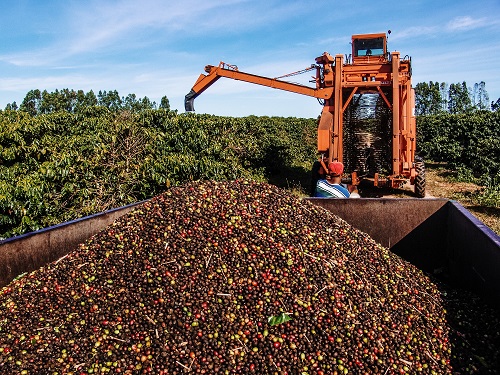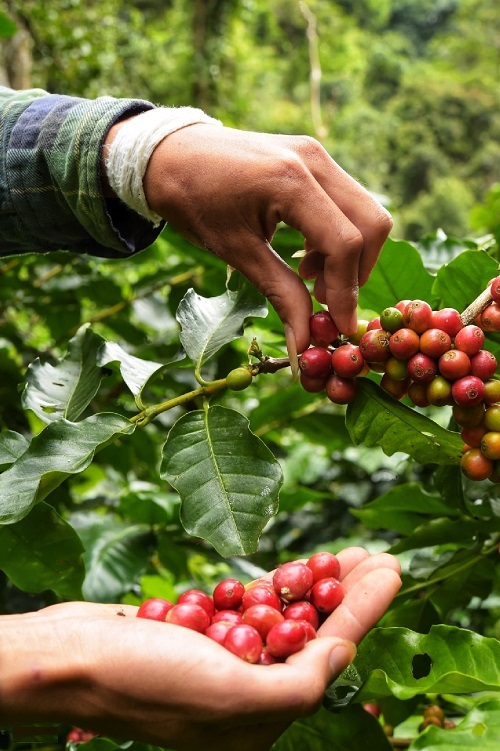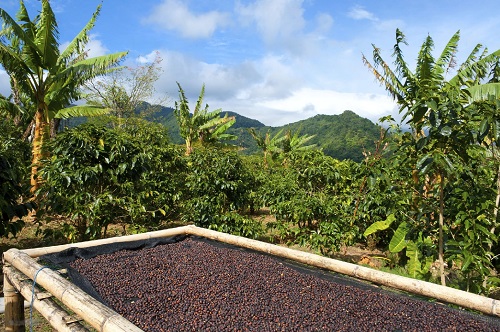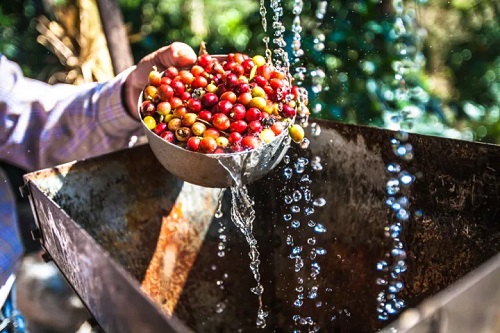Follow these Top Tips on Harvesting Coffee that will help also help you to use it effectively after growing it in the home garden!

Harvesting Coffee is not as tough as it seems, and this article will give you all the information you need to do it easily at home!
Find Do Monstera Like Coffee Grounds?
Harvesting Coffee Beans
1. Mechanical Method

Mechanical harvesting is the most widely used method of harvesting coffee beans. This method uses a machine to strip the cherries off the coffee bush, and the beans are then collected and transported to the processing facility.
The mechanical harvester is used with a large, rotating drum that is covered with metal spikes. It is towed by a tractor and driven through the coffee plantations. As it moves, the drum strips the cherries off the bushes and collects them in a bin.
The beans are then loaded onto a conveyor belt and transported to the processing facility, where they are cleaned, hulled, and graded before being packaged for sale.
This method of harvesting is efficient and cost-effective, but it does not always allow for the careful sorting of quality beans. It also increases the risk of over-harvesting and causes significant damage to the environment.
2. Hand Picking

The hand-picking method of harvesting coffee beans is a labor-intensive process in which the farmer manually selects ripe coffee cherries from the branches of the coffee tree. This method is a traditional method of harvesting coffee beans and is still used today in many parts of the world.
This method requires a team of pickers to walk through the coffee fields and carefully select only the ripe cherries. The pickers need to look carefully at each cherry and determine if it is ready to be picked. The process of picking coffee cherries is very delicate, as the cherries that are picked too early or too late can affect the quality of the beans.
Once the ripe cherries have been picked, they are taken to a processing station, where they are sorted, washed, and dried. The beans are then separated from the cherry and stored until they are ready to be transported to the roaster.
The hand-picking method of harvesting coffee beans requires skill and attention to detail. It is also a method that is time-consuming and costly but is often used to ensure that the highest quality beans are harvested.
Processing Coffee Beans
1. Dry Method

The dry method of processing coffee beans is the traditional and most common method of processing. This method allows the beans to dry out in the sun for several weeks until they reach the desired moisture level.
This method is often used in areas with hot and dry climates. The beans are spread out evenly on large patios or raised beds and left to dry in the sun. During this time, workers constantly turn the beans to ensure even drying.
Once the beans reach the desired moisture level, they are gathered, sorted, and stored in bags until they are ready to be roasted.
2. Wet Method

The wet method of processing coffee beans involves the use of water to separate the coffee pulp from the beans. This method is typically used in areas where the coffee grows in wet environments, such as Latin America, Africa, and Southeast Asia.
In the wet method, coffee cherries are harvested and then pulped to remove the outer layer of skin and the mucilage. The coffee beans are then fermented in water for up to 48 hours. During this time, the mucilage is broken down, and the natural sugars in the beans are released into the water.
The beans are then washed to remove any residual mucilage and to help separate the beans from the coffee pulp. The beans are then dried mechanically or with the sun. Finally, the beans are hulled to remove the parchment layer and graded according to size and quality.
The wet method of processing coffee beans is more labor-intensive than the dry method, but it produces higher-quality coffee with more distinct flavor characteristics. In addition, it is better for the environment because it uses less water and generates less waste.


